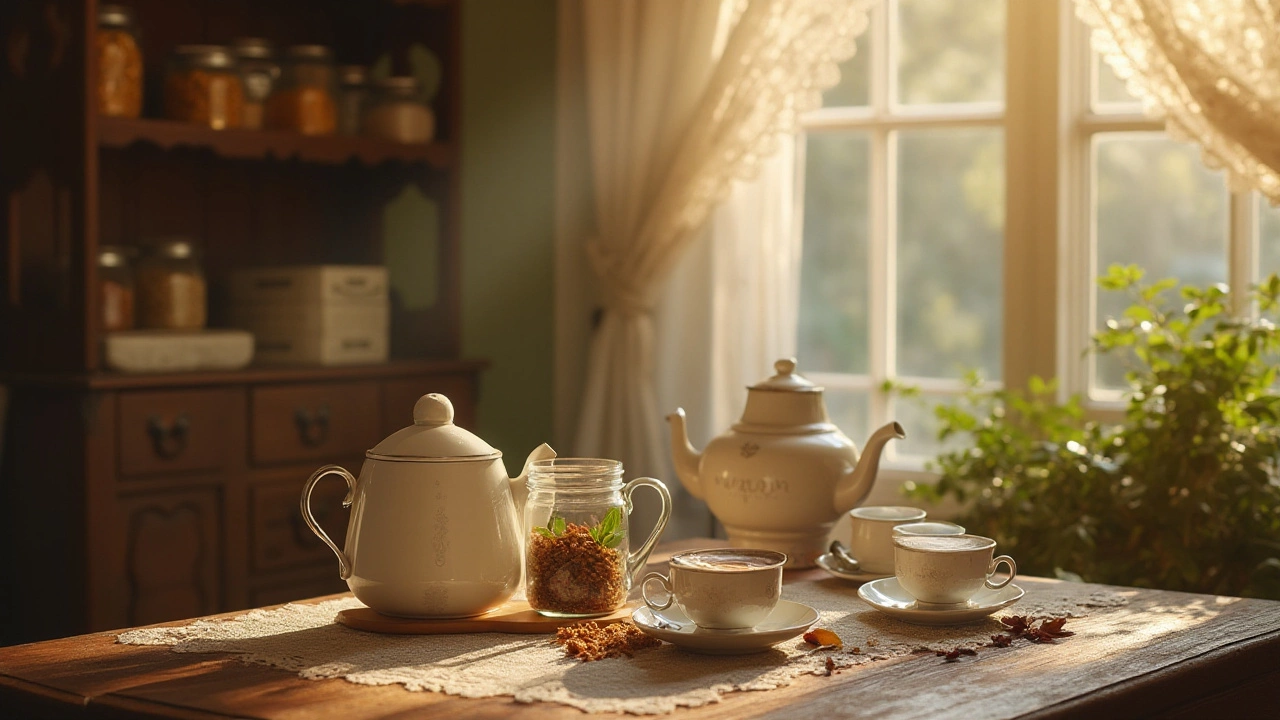Tea Appreciation: Simple Steps to Savor Every Sip
If you’ve ever taken a sip of tea and felt a moment of calm, you already know why tea appreciation matters. It’s not just about drinking a hot liquid; it’s about noticing flavor, aroma, and the story behind each leaf. Below are practical tips you can start using today, whether you’re a total beginner or a seasoned teaphile.
How to Taste Like a Pro
First, grab a clean cup and warm water—not boiling, around 175°F (80°C) for green teas, 200°F (93°C) for black teas. Pour, let the tea steep for the recommended time, then give it a quick swirl. Take a sniff before you sip – the aroma tells you a lot about the brew. When you taste, let the liquid roll over your tongue. Notice whether it’s sweet, bitter, astringent, or buttery. Jot down a few words; a short cheat sheet helps you track patterns across different teas.
Don’t rush. A good tasting session lasts about five minutes: a quick smell, a small sip, a pause, then another sip. This rhythm gives your palate time to reset and pick up subtler notes like floral hints in a white tea or earthy tones in a pu-erh.
Pairing Tea with Food
Pairing works like a match‑making game. Light, delicate teas such as jasmine or green tea pair well with salads, sushi, or mild cheeses. Their subtle flavors won’t get drowned out. Bold black teas or oolongs shine alongside rich foods—think dark chocolate, roasted nuts, or grilled meat. The key is balance: a tea should either complement or contrast the food, never compete.
Try a simple experiment at home: brew a cup of your favorite tea and snack on a piece of cheese. If the tea feels smoother after the bite, you’ve found a good match. Keep a list of successful combos; it’s a handy guide for future tea parties.
Storing Your Tea Right
Tea is a living product. Store it in a cool, dark place away from strong smells. Airtight containers work best—think tin or a zip‑lock bag with a desiccant packet. Avoid the fridge unless you’re dealing with loose leaf pu‑erh that benefits from a little humidity control.
One common mistake is mixing different teas in the same jar. The aromas cross‑contaminate, and you’ll lose the pure taste of each variety. Keep each type separate, label the containers, and you’ll always know what you’re reaching for.
Joining the Tea Community
Talking about tea makes the experience richer. Share your tasting notes on social media, join a local tea club, or swap samples with friends. The tag "tea appreciation" on blogs like Wine Geek Confessions lets you discover posts about tea tasting setup, pairings, and even how old tea can be safely enjoyed.
Getting involved doesn’t have to be pricey. Many cafés host free tea tastings, and online forums offer free resources. The more you discuss, the more you’ll notice nuances you might have missed on your own.
Quick Recap
1. Warm water, proper steep time, and a sniff before you sip.
2. Pair light teas with light foods, bold teas with rich foods.
3. Store in airtight, odor‑free containers.
4. Share notes and join a community.
Start with one of the teas listed in our "What to Serve at a Tea Tasting" guide, follow these steps, and you’ll feel the difference in just a few cups. Happy sipping!
Tea tasting is a fascinating journey through four distinct stages: aroma, appearance, flavor, and aftertaste. Each stage offers a unique perspective into the complex world of tea. This exploration helps individuals to fully appreciate the nuances of different tea varieties. Discover how these stages enhance the sensory experience of tea, allowing for a deeper connection with each cup.
View DetailsIf you find yourself not enjoying the taste of tea as you once did, you are not alone. There are numerous reasons why your palate might change over time, from personal health factors to evolving preferences. Whether it's due to changes in your taste receptors or the influence of lifestyle and dietary adjustments, understanding these factors can help regain the joy of tea tasting. Dive into the world of teas with a fresh perspective and learn how to appreciate them again.
View Details


